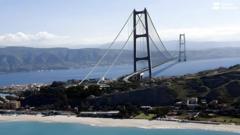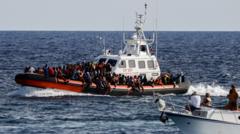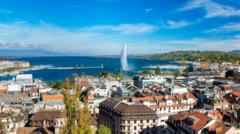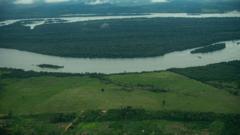Efforts to build the bridge have faced opposition and challenges, but authorities remain optimistic about its benefits.
Italy Approves Construction of World's Longest Suspension Bridge to Sicily

Italy Approves Construction of World's Longest Suspension Bridge to Sicily
Government greenlights €13.5 billion project aimed at boosting economic growth and connectivity.
Rome has officially approved a monumental €13.5 billion ($15.6 billion) project to construct the world's longest suspension bridge, designed to link Sicily with Calabria, a region situated at the tip of Italy. The ambitious bridge aims to span 3.3 kilometers (2.05 miles) over the seismically active Messina Strait, with engineers assuring that it will endure potential earthquakes, marking a significant advancement in Italian infrastructure.
This initiative, encountered by numerous setbacks and cancellations in the past due to cost, environmental concerns, safety issues, and alleged mafia influence, represents the latest attempt by Italian officials to bring the Messina Bridge project to fruition. Prime Minister Giorgia Meloni acknowledged the difficulties faced so far but expressed her belief in the bridge as a vital investment for future generations. Meloni emphasized the importance of challenging endeavors that offer value to Italy.
The final project outlines the bridge's construction, featuring two towering structures, each standing at 400 meters (1,300 feet), with dual railway lines centrally positioned and three traffic lanes on each side. The Italian government is also considering classifying the bridge as military expenditure to help fulfill a NATO commitment to allocate 5% of GDP for defense spending.
Transport Minister Matteo Salvini, a political ally of Meloni, underscored the expected economic impact, projecting the creation of 120,000 jobs annually from the bridge's construction. He stated that the goal is to complete the project by 2032 or 2033, particularly important as both Sicilia and Calabria are among Europe's economically disadvantaged regions.
However, the project still needs the endorsement of the Italian Court of Auditors and environmental agencies at local, national, and EU levels. Local residents impacted by potential property expropriations will require consultations, and they could legally challenge the project, which may cause delays or halt construction.
Concerns have persisted about the potential misuse of taxpayer funds by organized crime in southern Italy, causing past proposals for the bridge to be abandoned. Legislators and local politicians have voiced their opposition, suggesting that the government's move is contentious, detracting from critical investments in transportation, infrastructure, education, and healthcare.
Community opposition is also highlighted by grassroots organizations, like "No to the Bridge," which argue that the bridge construction would exacerbate local water shortages, as both Sicily and Calabria have struggled with drought issues. Presently, train transport across the Strait depends on shuttling trains onto ferries for a 30-minute crossing over water, underscoring the need for improved connectivity in the region.
This initiative, encountered by numerous setbacks and cancellations in the past due to cost, environmental concerns, safety issues, and alleged mafia influence, represents the latest attempt by Italian officials to bring the Messina Bridge project to fruition. Prime Minister Giorgia Meloni acknowledged the difficulties faced so far but expressed her belief in the bridge as a vital investment for future generations. Meloni emphasized the importance of challenging endeavors that offer value to Italy.
The final project outlines the bridge's construction, featuring two towering structures, each standing at 400 meters (1,300 feet), with dual railway lines centrally positioned and three traffic lanes on each side. The Italian government is also considering classifying the bridge as military expenditure to help fulfill a NATO commitment to allocate 5% of GDP for defense spending.
Transport Minister Matteo Salvini, a political ally of Meloni, underscored the expected economic impact, projecting the creation of 120,000 jobs annually from the bridge's construction. He stated that the goal is to complete the project by 2032 or 2033, particularly important as both Sicilia and Calabria are among Europe's economically disadvantaged regions.
However, the project still needs the endorsement of the Italian Court of Auditors and environmental agencies at local, national, and EU levels. Local residents impacted by potential property expropriations will require consultations, and they could legally challenge the project, which may cause delays or halt construction.
Concerns have persisted about the potential misuse of taxpayer funds by organized crime in southern Italy, causing past proposals for the bridge to be abandoned. Legislators and local politicians have voiced their opposition, suggesting that the government's move is contentious, detracting from critical investments in transportation, infrastructure, education, and healthcare.
Community opposition is also highlighted by grassroots organizations, like "No to the Bridge," which argue that the bridge construction would exacerbate local water shortages, as both Sicily and Calabria have struggled with drought issues. Presently, train transport across the Strait depends on shuttling trains onto ferries for a 30-minute crossing over water, underscoring the need for improved connectivity in the region.





















